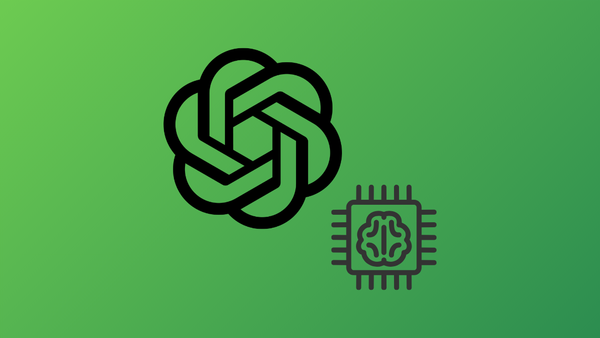Character AI is a neural language-based AI chatbot developed by Noam Shazeer and Daniel De Freitas (developers of Google's LaMDA). The model learns what word might come next by consuming enormous amounts of literature, and it can generate human-like responses.
But it differs from other chatbots because Character AI allows you to chat with characters. These "characters" could be your favorite celebrity, cartoon character, or an entirely fictional personality created by you or someone else in the community. Moreover, you can also create your own AI character and train it to behave a certain way. Gone are the days only Tony Stark could have that; you can have your own J.A.R.V.I.S!
It has more depth than it may seem in the first two paragraphs, though, and we will dive deep into it. If you wish to know more about Character AI, this guide is all you need.
What is Character AI?
As the name suggests, you can create various characters by giving them a specific personality and further anchoring them using parameters. You can also share the characters created by you with the community and let them interact with it.
Characters can be created with particular themes or objectives, such as helper AI, creative writing assistants, image generators, programming assistants, etc.
The description and their welcoming message will initially create the characters' personalities, further shaped by the examples of dialogues that you may feed it. Characters will also adapt to the dialect of the identity you want.
You can not only share AI chatbots created by you with the community but can also create a group of several chatbots with whom you can interact or let them interact with each other.
Though at first glance, it may seem Character AI is just for fun and games, the applications are practically limitless. You can create creative writing AI with a particular personality to cater to a specific audience, or you can have a chatbot for your business that politely replies to all those customer questions that have already been answered on your FAQ page.
Now that you are acquainted with Character AI and what it can do, let's start with how you can build your own character.
How to Create a Character in Character AI
As mentioned previously in this guide, a character can be anything, a movie character, a famous person, your pet, or even your desk plant. All you need is a concept, and that should be enough to bring it to life.
First, head to beta.character.ai using your preferred browser. Then, click on the 'Accept' button to proceed.

Now, click the 'Sign Up' button in the top right corner to proceed. If you already have an account, click the 'Log in' button.

You can then either continue with the listed services or enter your email address and password to create an account.

Once you have logged in, click on the 'Create' button on the left sidebar. Next, click on the 'Create Character' option.

After that, set up the basic details for your character, like Name, Greeting, Visibility, Image generation alongside the text, and its avatar.

It is also essential to set the 'Visibility' settings right. If you are building a character for a specific reason, it is best to keep it 'Unlisted' or 'Private' as it may learn things you do not wish to when interacting with someone else on the platform. Once you have filled in all the necessary details, click the 'Create Image' option to create an avatar for your AI. If you already have an apt picture in your local storage, click on the 'Choose file' option.

If you click on the 'Create Image' option, you must provide a prompt for the image you wish to create. Once the image is generated from the prompt, click the 'Set Avatar' button. To generate a new image, enter a new prompt and click on the 'Create' option.

After that, if you cannot wait to chat with your chatbot, click the 'Create and chat' button in the bottom right corner. Otherwise, if you wish to configure the chatbot in more detail, click the 'Edit Details' button.

If you clicked on the 'Edit Details' button, you would see a screen that allows you to enter a Short Description, Long Description, Categories, Character Voice, and much more about the character. For your ease of convenience, we have listed the function and importance of each field in a brief gist below:
- Greetings: As mentioned previously, this is the first message displayed when you talk to your AI. It impacts your character's personality; thus, make sure to utilize it thoroughly.
- Short Description: This will be displayed on the AI thumbnail and will not impact its personality. Write something catchy here.
- Long Description: This field holds the most importance. Here you can define personality traits, create a backstory for the character, and define important life events; anything and everything that can impact the character's behavior should be defined here.
- Categories: You need to select relevant keywords from the drop-down menu. You can select multiple keywords. Again, select carefully, as this will impact the character.
- Character Voice: This is pretty self-explanatory. Choose a voice for your character from the drop-down list. To preview, click the 'Blue' play button following the drop-down menu.
- Visibility: As you might have already guessed, this field defines who can access your AI. If you wish to train it specifically, keeping it private or Unlisted is better. Select the 'Public' option to let everybody access your character.
- Definition: This is a tricky one. You can set example messages or insert a sample chat with your character in this field. If you set an example message here, the AI will take clues from it and add them to its backstory. The example message(s) and/or sample chat(s) will reflect in all the replies. Moreover, there is a structure to insert example messages and/or chats. For your better understanding, below is an example.
Format for a Sample Chat
{{User}}: Question?
{{Char}}: Response
END_OF_DIALOG{{User}}: So are you Tony Stark?
{{Char}}: Yes I am Tony Stark. You can also call me Iron Man. I am also a part of the Avengers team.
END_OF_DIALOGIn the above example, it might feel just like an alternative opening statement by the AI; however, the three characteristics mentioned here will be significant and will be used by the chatbot if and when a question is asked about that topic.
Moreover, since the field has a character limit, you can stack your answers and ignore the basic structure to save some space. That being said, do not forget to insert the 'END_OF_DIALOG' tag between two separate topics.
Once you have configured all the fields, click the 'Create and Chat' or 'Save' button to proceed.

And that's it; you can now chat away with your character AI with its distinct personality.
Use Character AI for Creative Writing
Character AI can prove to be an excellent tool for writers. You can build a specific character that focuses on creative writing that can help you generate an outline for characters, plot, and maybe dialogues. Otherwise, you can build a character that has a specific tonality that you might require in your writing and ask its feedback on your writing. The limit, as mentioned earlier, is only your imagination.
Use Character AI for Business
Character AI can also be used for Business in various ways. You can create no-nonsense AI chatbots that politely help answer customer questions. You can also create an AI that can specifically help you create marketing material or review already created marketing material from a specific demographic point of view.
Final Tips
Character AI is a versatile tool that can be useful for various purposes. However, a couple of final tips on how to use it better cannot hurt.
Always try to be clear about your instructions. Remember, the more precise the instructions, the better the AI can understand and execute the task. Since AI is trained on the LaMDA platform, it will be better if you use natural language, as it understands that better.
Last but not least, the AI responses might not always be wholly accurate or correct. But you can exhibit patience by either rewording your question or using follow-up questions to let AI understand you better and deliver the desired results.
If you have been waiting to display your creativity and use an AI chatbot innovatively, Character AI provides you with the best tools available to achieve that.











Member discussion